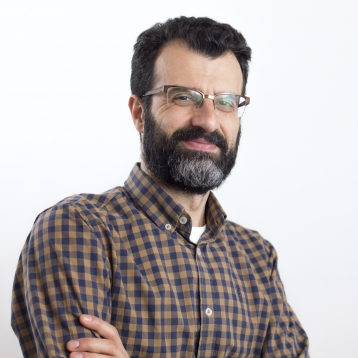Insights
Research
Advisory
Events
Company
KuppingerCole's Advisory stands out due to our regular communication with vendors and key clients, providing us with in-depth insight into the issues and knowledge required to address real-world challenges.

Meet our team of analysts and advisors who are highly skilled and experienced professionals dedicated to helping you make informed decisions and achieve your goals.

Meet our business team committed to helping you achieve success. We understand that running a business can be challenging, but with the right team in your corner, anything is possible.
Over simplifying, IT security means defending the IT systems from threats procured by cybercriminals. Their targets are, for example, the manipulation of systems, the extorsion or exfiltration of data, and the interruption or alteration of services. However, what happens if we have humans instead of IT systems? Given that the scope of an attacker is always the same, as aforementioned, attacking a human is an entirely different process, and the attack tactics must change. This well-known fact involves social engineering and human sciences (e.g., psychologists or behavioural sciences instead of informatics). However, from the cyber security side of the coin, what does it imply dealing with humans? What does it mean, for example, to perform convincing penetration testing or vulnerability scanning to deeply test human weaknesses: it is not merely a problem of sending a phishing email and waiting for clicks. How can be done a threat analysis or threat intelligence on humans? Moreover, how can a company calculate the cyber risk that a human represents and how many effective ways to reduce it? If we fully put humans (either as employees or IT security operators) at the centre of cybersecurity, the questions become several.
The problem is complex because, by its nature, it is multicultural and requires different non-technical competencies. It includes experts in philosophy, political science, cyber sociology, pedagogy, acting performance, etc., collaborating with cybersecurity experts. Facing the human element of security is a genuinely multicultural and interconnected approach. Furthermore, humans are coincidentally “human” and not machines: there are also ethical and legal issues to consider, and their reactions change during the day. The talk will explore and present a comprehensive view of what happens when there are not the IT systems but the humans at the centre of cybersecurity.
Over simplifying, IT security means defending the IT systems from threats procured by cybercriminals. Their targets are, for example, the manipulation of systems, the extorsion or exfiltration of data, and the interruption or alteration of services. However, what happens if we have humans instead of IT systems? Given that the scope of an attacker is always the same, as aforementioned, attacking a human is an entirely different process, and the attack tactics must change. This well-known fact involves social engineering and human sciences (e.g., psychologists or behavioural sciences instead of informatics). However, from the cyber security side of the coin, what does it imply dealing with humans? What does it mean, for example, to perform convincing penetration testing or vulnerability scanning to deeply test human weaknesses: it is not merely a problem of sending a phishing email and waiting for clicks. How can be done a threat analysis or threat intelligence on humans? Moreover, how can a company calculate the cyber risk that a human represents and how many effective ways to reduce it? If we fully put humans (either as employees or IT security operators) at the centre of cybersecurity, the questions become several.
The problem is complex because, by its nature, it is multicultural and requires different non-technical competencies. It includes experts in philosophy, political science, cyber sociology, pedagogy, acting performance, etc., collaborating with cybersecurity experts. Facing the human element of security is a genuinely multicultural and interconnected approach. Furthermore, humans are coincidentally “human” and not machines: there are also ethical and legal issues to consider, and their reactions change during the day. The talk will explore and present a comprehensive view of what happens when there are not the IT systems but the humans at the centre of cybersecurity.
 Cybersecurity Senior Domain Specialist
Cybersecurity Senior Domain Specialist